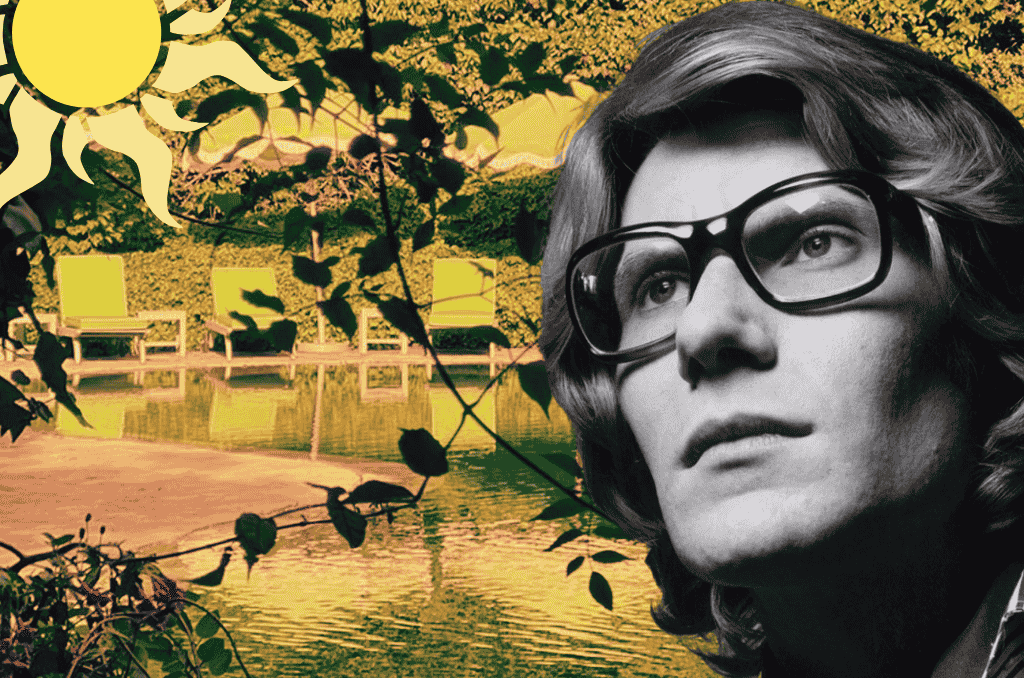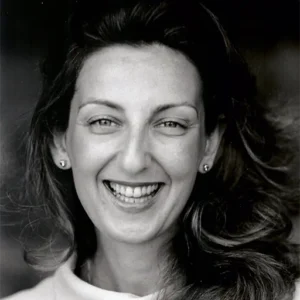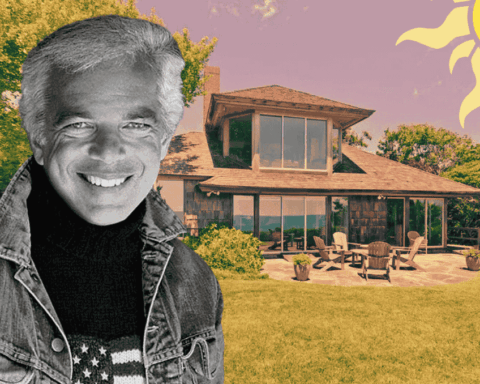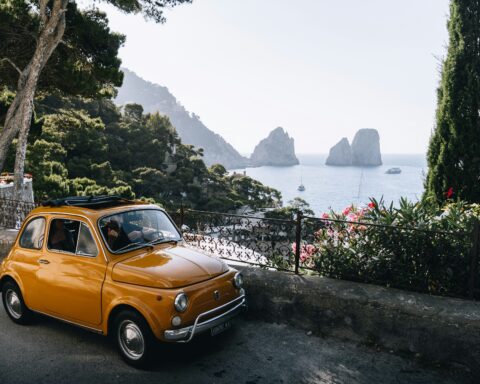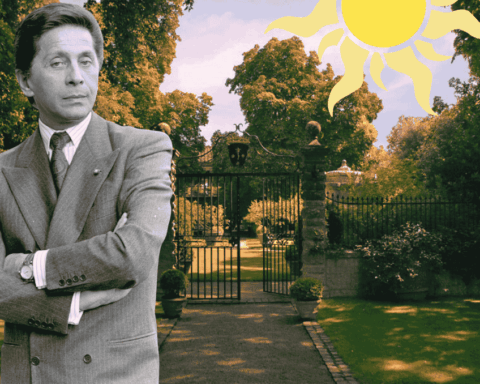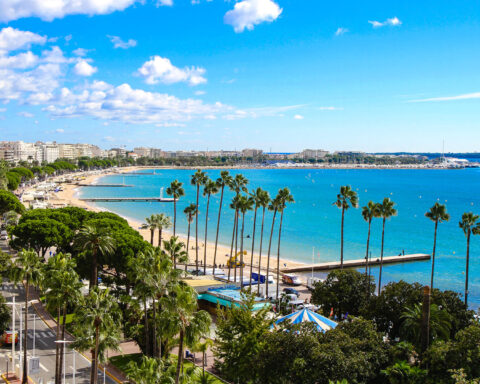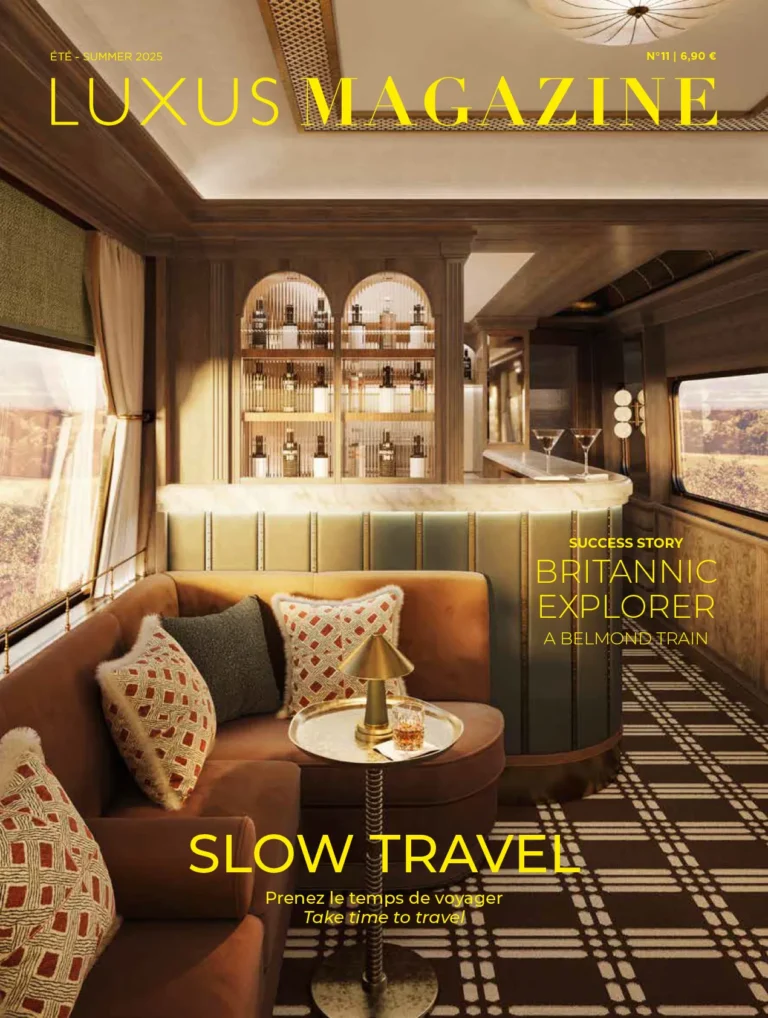From Miami to Tangier, via the French Riviera, Cascais and the Hamptons, the biggest names in fashion have found summer retreats far from the catwalks and spotlights where they can express their creative genius. Mythical villas, family homes, secret workshops and castles, each of these exceptional places embodies the spirit, audacity and art of living of their famous owners. First stop in Morocco, with Yves Saint Laurent.
This summer, LUXUS MAGAZINE takes you on a weekly tour of a prestigious residence: a nine-part journey through the iconic vacation spots of the world’s greatest fashion designers. Our journey begins in Morocco at La Mabrouka, Yves Saint Laurent’s little-known residence, now converted into a hotel.
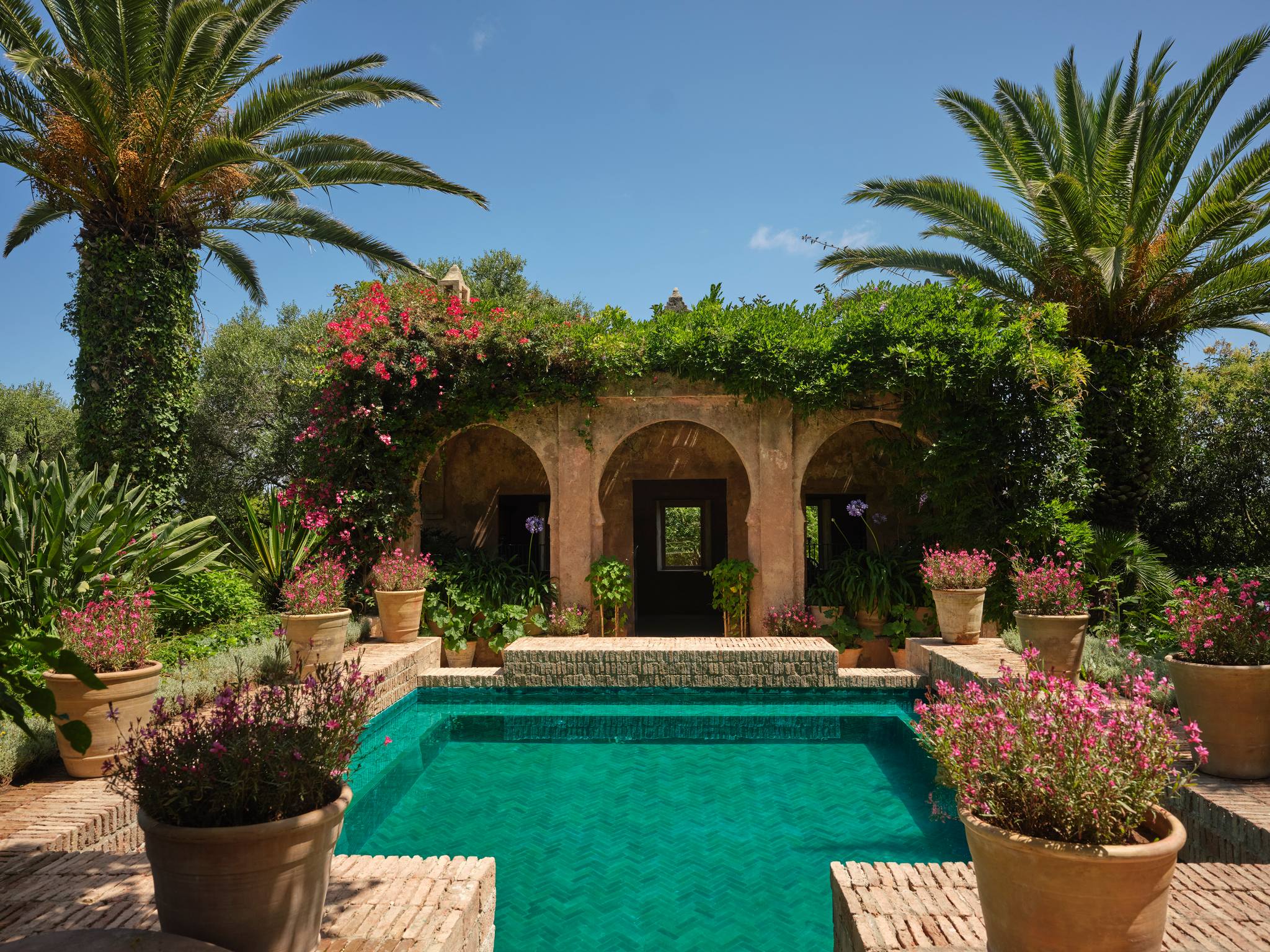
Nestled in the hills above Tangier, facing the Strait of Gibraltar, Villa Mabrouka was Yves Saint Laurent’s ultimate private retreat during the last decade of his life. Now transformed into a luxury hotel by designer Jasper Conran, it continues to embody a certain idea of refinement: a lifestyle combining beauty, silence, and light, faithful to the spirit of Tangier.
A name steeped in poetry: Villa Mabrouka, the house of luck
It’s a sweet word, almost whispered: Mabrouka – meaning “blessed” or “lucky” in Arabic. Built in the 1940s in an Andalusian style, the villa stands on a cliff overlooking the bay of Tangier. It was purchased in 1997 by Yves Saint Laurent and Pierre Bergé, long after they first fell in love with Morocco in 1966.
Far from the fame of the Villa Majorelle in Marrakech, the Villa Mabrouka was a more intimate place, a haven of peace for the couturier’s last summers. A place of silence, reading, and inspiration, away from the spotlight but rich in a diffuse artistic presence. Tangier, at the time still haunted by the literary ghosts of Paul Bowles, Jean Genet, and Tennessee Williams, seemed the ideal backdrop for the retreat of a creator in search of beauty and tranquility.
The acquisition of a refuge
In 1997, Saint Laurent and Bergé acquired Villa Mabrouka, as a logical echo of their unconditional love for Morocco. They had already restored the Majorelle Garden in Marrakech, which had become a symbol of their cultural commitment. In Tangier, they found something else: the sea, the wind, a languid gentleness.
The renovation of the villa was entrusted to Jacques Grange. The interior designer imagined an atmosphere worthy of a 1950s English novel: one color per room, rattan, comfortable but carefully chosen furniture. Far from the baroque accumulation of art objects, Jacques Grange favored sophisticated simplicity. The decor was designed to be a refuge for the mind as well as the body. In his book Les Paradis Perdus d’Yves Saint Laurent et Pierre Bergé, the decorator recounts: “The theme was that of an eccentric Englishman from the 1950s who came to live in Tangier. Yves wanted chintz and a single color per room: a blue living room, a yellow living room… It was like decorating a house for the characters in a Tennessee Williams play.
A garden like a world apart
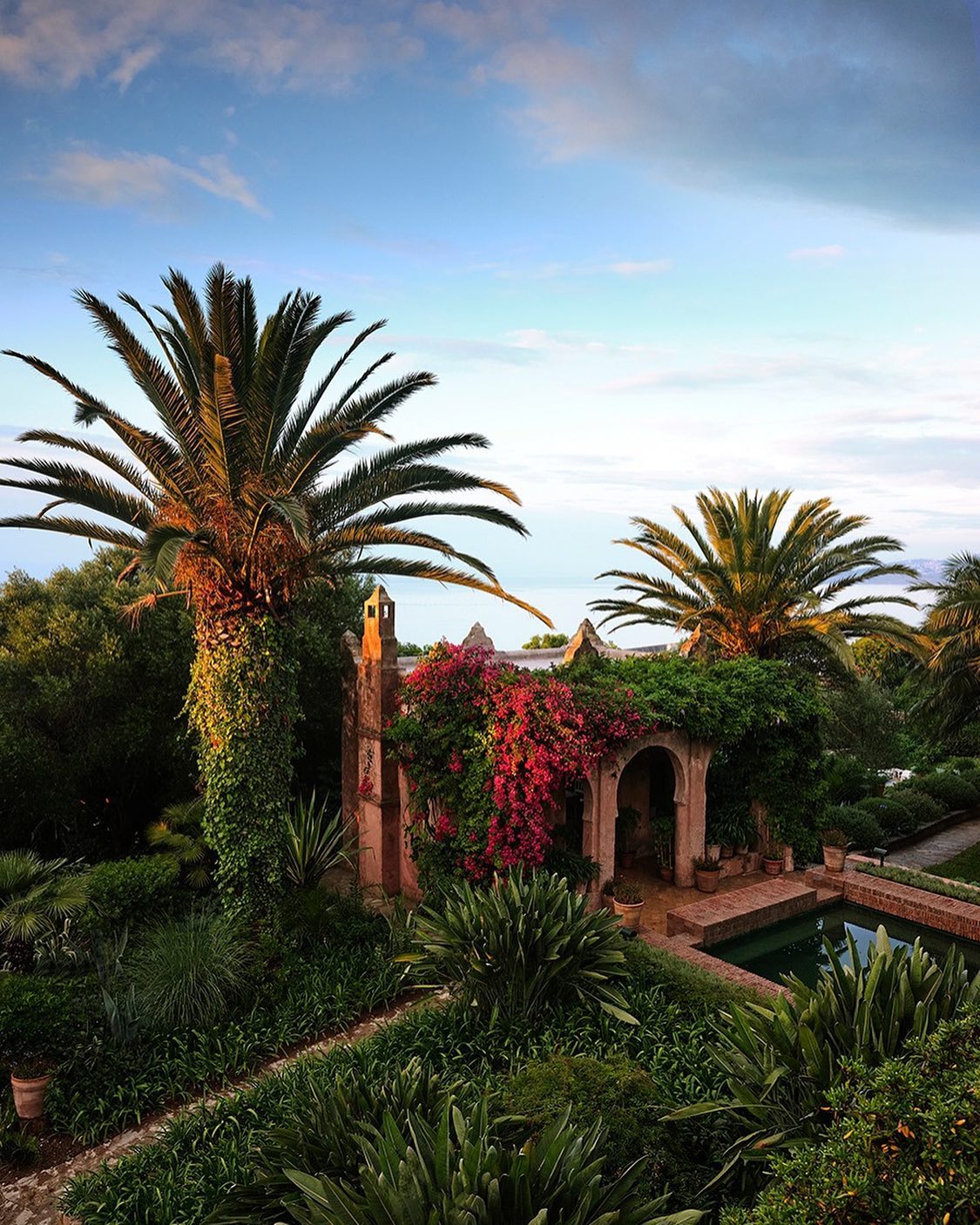
But Villa Mabrouka is also a garden. Or rather, a succession of botanical tableaux. Landscape architect Madison Cox, a close collaborator of the couple, created a suspended paradise of terraces interspersed with bougainvillea, lemon trees, white roses, and palm trees. An organically shaped swimming pool is carved into the rock.
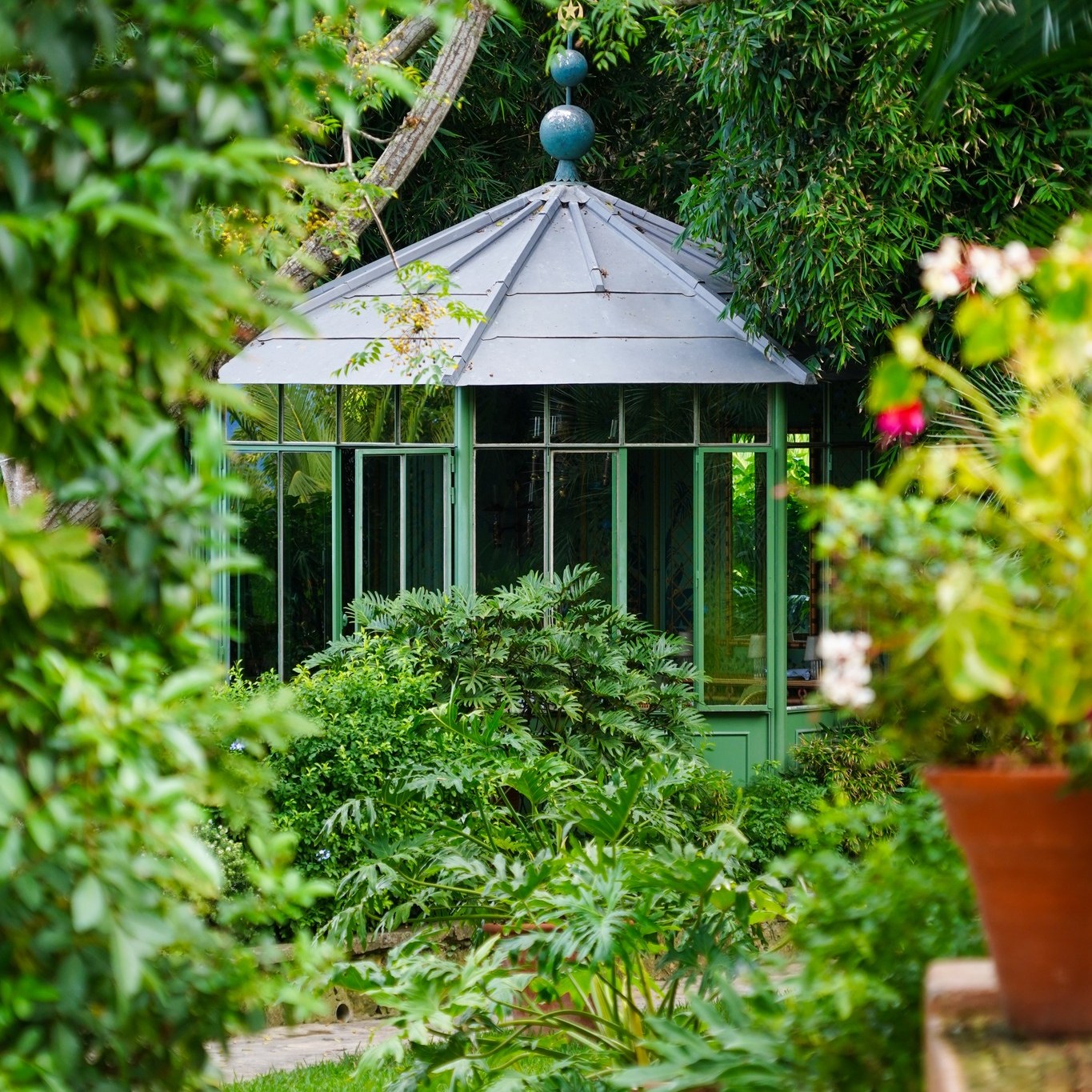
At the bottom of the garden, a pavilion designed by American architect Stuart Church opens onto the sea. It was here, in the shade of a fig tree, that Yves Saint Laurent loved to read, draw, or simply contemplate the horizon. The garden is still one of the most beautiful in Tangier today.
An aesthete’s retreat
During the last decade of his life, Yves Saint Laurent made Villa Mabrouka a place of slowness and meditation. He rarely had visitors, loved the silence, lunches under the trees, and the pale summer skies above the bay. It was a stark contrast to the hustle and bustle of Paris and the demands of the fashion world.
For him, Morocco was always more than just an adopted country: it was an endless source of colors, shapes, and scents. Villa Mabrouka is a discreet showcase for this almost spiritual relationship.
After Yves, a new lease of life thanks to Jasper Conran
After Yves Saint Laurent’s death in 2008, Pierre Bergé never returned to Villa Mabrouka. The house remained under the aegis of the Majorelle Foundation, but without inhabitants, it slowly fell into disrepair. Until a new chapter began in 2019.
British designer Jasper Conran, who is passionate about Morocco, bought the villa. This was not his first venture: his hotel L’Hôtel Marrakech, which opened in 2016, was acclaimed for its aesthetic sensibility and respect for local heritage. With Villa Mabrouka, he has bigger plans: to create a luxury hotel that remains faithful to the spirit of the place.
A gentle metamorphosis
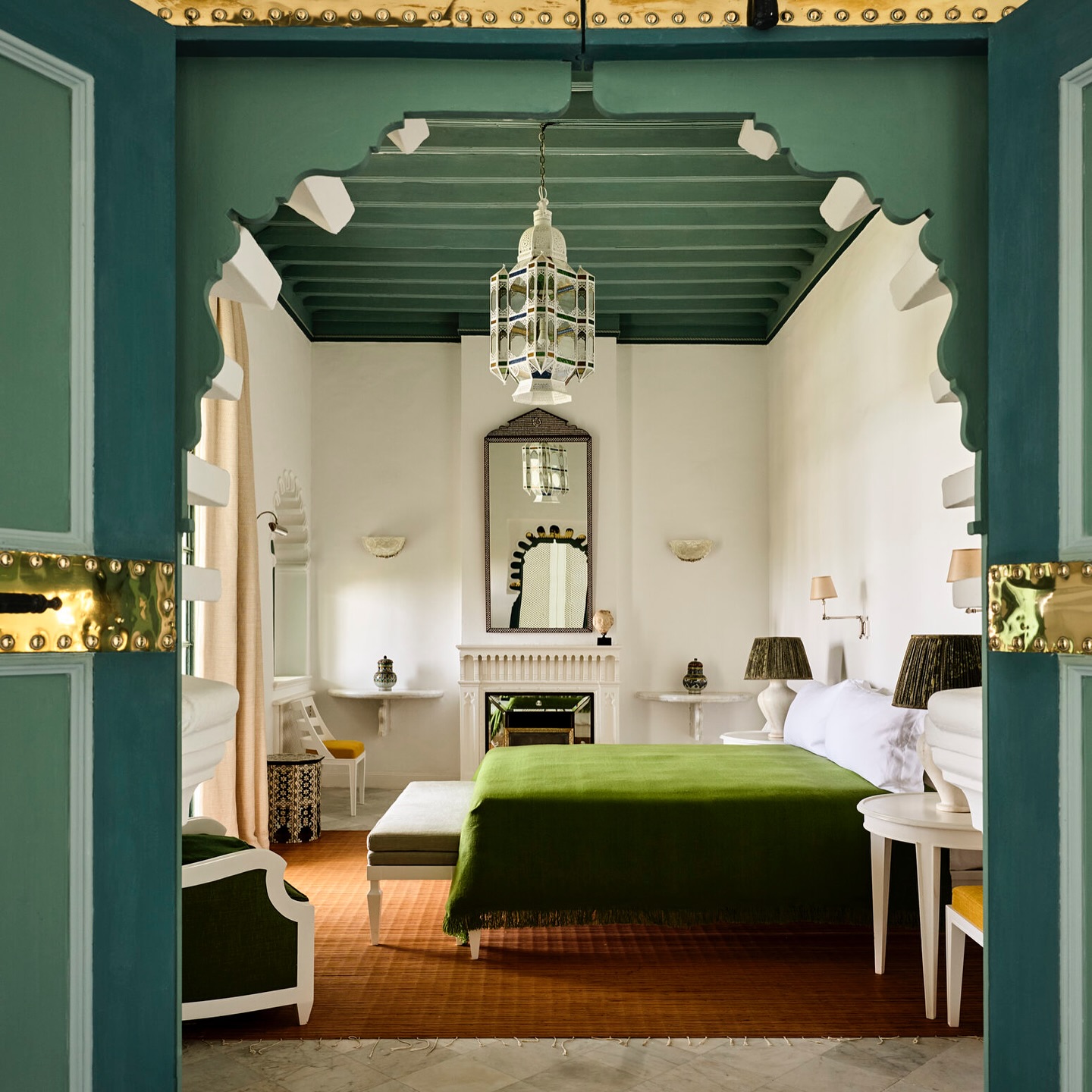
For four years, Jasper Conran oversaw the renovation of the villa with meticulous care. There was no question of betraying the original modernist lines or the unique spirit instilled by Yves Saint Laurent and Jacques Grange. Jasper Conran expanded and renovated, but without imposing anything too visible.
Today, Villa Mabrouka is a twelve-room hotel divided between the main house and pavilions in the garden. Comfort is absolute but discreet. Three restaurants, a rooftop bar, two swimming pools, and a garden restored down to the smallest detail. The experience is that of a hotel that welcomes guests as if they were staying in an exceptional home.
The colors are soft, the materials noble, and Moroccan craftsmanship is omnipresent. The villa has returned to its original purpose: to be a refuge for aesthetes.
A hotel, but above all a way of life
What strikes you when you walk through the heavy carved wooden doors of Villa Mabrouka is the immediate impression of peace. The rustling of leaves, the singing of birds, the light filtered through the mashrabiya screens. Everything encourages you to slow down and reconnect with the passing of time.
Guests read by the pool, enjoy breakfast on the shaded terraces, or stroll down to the medina. The service is attentive without being intrusive. Here, luxury is the elegance of the moment.
The cuisine celebrates local produce, with Mediterranean and Moroccan influences. The rooftop bar offers unforgettable sunsets over the Strait of Gibraltar. Nothing seems ostentatious; everything exudes sincere beauty.
Tangier, the eternally creative city
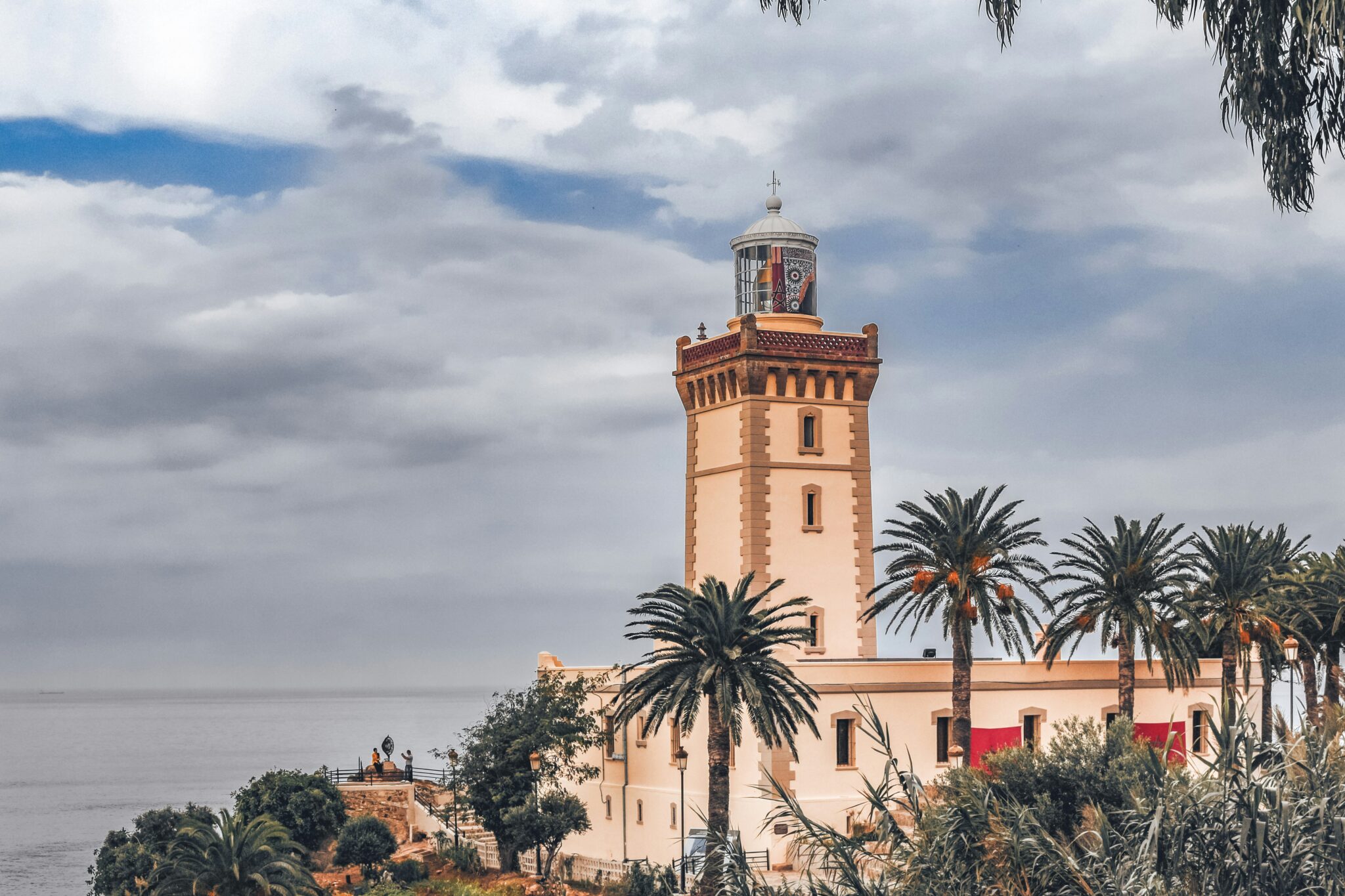
One cannot talk about Villa Mabrouka without mentioning Tangier. The city has always attracted souls sensitive to the invisible. From exiled American writers to painters fascinated by the light of northern Morocco, Tangier is a cultural kaleidoscope.
Today, the city continues to attract a new generation of creators, drawn by its bohemian atmosphere, emerging galleries, historic cafés, and fringed beaches. The medina, the Kasbah, the winding alleys, the fragrant souks, the modern corniche: everything here exudes a sense of fusion, exchange, and poetry. Among the must-see attractions are Café Hafa for mint tea overlooking the sea, the Petit Socco to feel the heart of the city, Perdicaris Park for its green haven, the Caves of Hercules and the American Legation Museum. Tangier promises encounters, emotions and raw beauty. It is the perfect setting for a hotel like Villa Mabrouka.
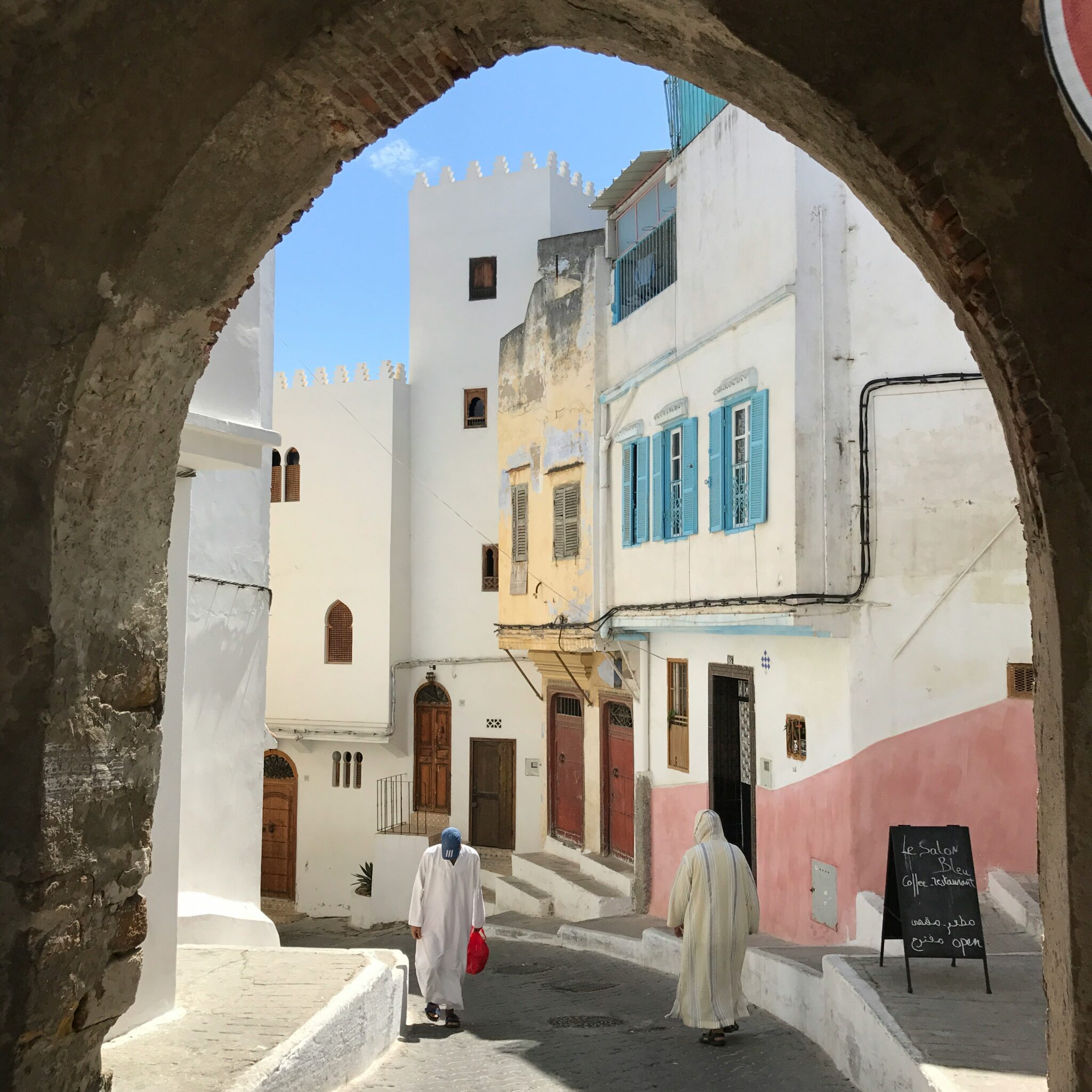
Villa Mabrouka is no longer the home of one man, but it has lost none of its soul. Thanks to Jasper Conran, it has become what it should never have ceased to be: an ode to light, slowness, and creativity. A rare hotel, where you don’t just come to sleep, but to find yourself.
In Tangier, where continents meet, Villa Mabrouka continues to exist as a place suspended in time. A house of good fortune for those who still know how to recognize beauty without fanfare.
Read also > Who will be the new owner of Karl Lagerfeld’s Louveciennes villa?
Featured photo: Montage of Villa Mabrouka’s poolside and Yves Saint Laurent portrait




